norway
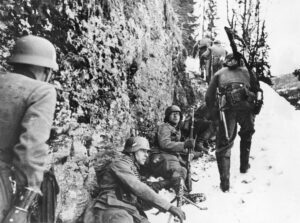 During the largely unsuccessful Norwegian Campaign of World War II, the Allies were in a fight to stop the Germans from fully occupying Norway, but it didn’t work in the end. The Norwegian campaign was carried out from April 8, 1940 to June 10, 1940, and involved the attempt by Allied forces to defend northern Norway coupled with the resistance of the Norwegian military to the country’s invasion by Nazi Germany.
During the largely unsuccessful Norwegian Campaign of World War II, the Allies were in a fight to stop the Germans from fully occupying Norway, but it didn’t work in the end. The Norwegian campaign was carried out from April 8, 1940 to June 10, 1940, and involved the attempt by Allied forces to defend northern Norway coupled with the resistance of the Norwegian military to the country’s invasion by Nazi Germany.
The Norwegian Campaign was planned as Operation Wilfred and Plan R 4, prior to the actual German attack, which the Allies knew was imminent, but had not yet happened. On April 4th, the battlecruiser HMS Renown set out from Scapa Flow for the Vestfjorden with twelve destroyers. The Royal Navy and the 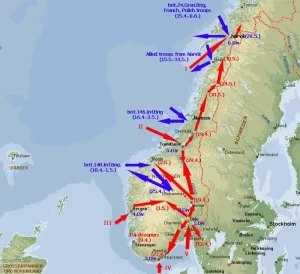 Kriegsmarine met at the First Battle of Narvik on April 9 – 10. The British forces conducted the Åndalsnes landings on April 13, thereby putting everything in place for the actual operation. Germany’s strategic reason for wanting Norway was to seize the port of Narvik and guarantee the delivery of iron ore needed for German steel production. In any war, steel is necessary for much of the weaponry.
Kriegsmarine met at the First Battle of Narvik on April 9 – 10. The British forces conducted the Åndalsnes landings on April 13, thereby putting everything in place for the actual operation. Germany’s strategic reason for wanting Norway was to seize the port of Narvik and guarantee the delivery of iron ore needed for German steel production. In any war, steel is necessary for much of the weaponry.
During one part of that campaign, in an air fight over Norway, a British fighter took down a German plane over a densely wooded area. Unfortunately, the British aircraft crashed as well. As it turns out, both crews survived the crashes, and while trying to get to a safe place, they encountered each other in the wilderness. In most situations, this could have been bad for one or both of the crews, but even though they were struggling against a language barrier, the rival airmen agreed not to turn on each other and instead, to team up in order to find  safety. They stayed in an abandoned hotel and shared breakfast. It wasn’t peace exactly, but they formed an uneasy truce, while they waited to see which side would show up to help first.
safety. They stayed in an abandoned hotel and shared breakfast. It wasn’t peace exactly, but they formed an uneasy truce, while they waited to see which side would show up to help first.
Instead of the British or the Germans, it was a Norwegian ski patrol that showed up to rescue the British soldiers, and of course, to take the Germans as POWs. While that one battle seemed to indicate that the British were headed for a victory over the Germans, that was not to be the case. The Germans did finally take over Norway in its entirety. Of course, as we all know, one battle is not a very good indication of who will win the war, and in the end, it was Germany that took a great fall, losing the entirety of World War II.
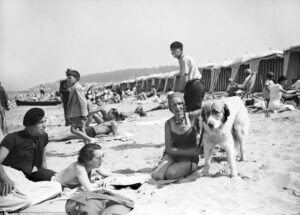
 Over the years, many people have collected postcards. Some like them for the scenic views, and some collect postcards that have been sent to them, saving them as mementos of family members who won’t always be with us. I have picked up lots of postcards for my sister, Cheryl Masterson, who has a collection. While this is a cool way to get great pictures of amazing places, postcards were once used as…intel.
Over the years, many people have collected postcards. Some like them for the scenic views, and some collect postcards that have been sent to them, saving them as mementos of family members who won’t always be with us. I have picked up lots of postcards for my sister, Cheryl Masterson, who has a collection. While this is a cool way to get great pictures of amazing places, postcards were once used as…intel.
Starting in 1942, as the BBC, as part of their planning of the D-Day attack, issued a public appeal for postcards and photographs of mainland Europe’s coast, from Norway to the Pyrenees. The British people were eager to help and began sending in postcards and pictures from their trips to France. Other families began searching through boxes of family photos, searching for anything that might show the beaches. Photos of kids building  sandcastles, and people lounging on the beach flooded the BBC offices. While it all seemed like a fun project, the people had no idea that their family photographs would prove very instrumental in the D-Day landings. Within 36 hours, over 30,000 packs of pictures of the French coast arrived at the BBC offices. Even more incredible was the fact that by 1944, 10 million holiday snaps and postcards, hotel brochures, letters and guidebooks had arrived by post. Once there, the postcards and photographs were sorted, and the best ones were pinned to a board in a top-secret planning room. Then the army bosses began to study every inch of the beaches and landing areas where the Normandy invasion would go on to take on June 6, 1944.
sandcastles, and people lounging on the beach flooded the BBC offices. While it all seemed like a fun project, the people had no idea that their family photographs would prove very instrumental in the D-Day landings. Within 36 hours, over 30,000 packs of pictures of the French coast arrived at the BBC offices. Even more incredible was the fact that by 1944, 10 million holiday snaps and postcards, hotel brochures, letters and guidebooks had arrived by post. Once there, the postcards and photographs were sorted, and the best ones were pinned to a board in a top-secret planning room. Then the army bosses began to study every inch of the beaches and landing areas where the Normandy invasion would go on to take on June 6, 1944.
The families who sent in their family photographs and postcards, had no idea what would come of their contribution. They weren’t told why their pictures were needed, just that it was an important project. Looking at the photographs now, the innocent snaps almost bring a feeling of deep sadness. Nevertheless, the photographs and postcards were instrumental and extremely important to the war effort. After looking at all the 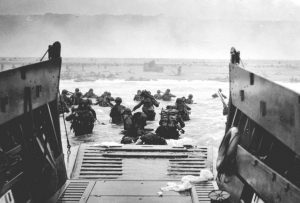
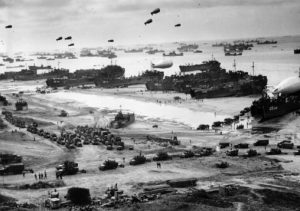 pictures, it was decided that the best place to carry out their plan was on the beaches at Normandy, France. Many of these postcards were used in briefings with officers, land craft operators and other infantry soldier to study and orient themselves based on their drop locations of the building and landmarks in these photos. Of course, the rest is history, and the operation to storm the beaches at Normandy was a great success.
pictures, it was decided that the best place to carry out their plan was on the beaches at Normandy, France. Many of these postcards were used in briefings with officers, land craft operators and other infantry soldier to study and orient themselves based on their drop locations of the building and landmarks in these photos. Of course, the rest is history, and the operation to storm the beaches at Normandy was a great success.
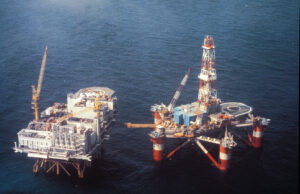 Apartment living is something many people do, and while they might dream of a house, or even have one, there can be reasons for having an apartment too. The oilfield would be one example of the need for a second place to live. Often, oil field workers must travel to the worksite. Once there, they have to stay there for a time, because traveling to and from home twice a day is just not feasible. Many oilfield companies provide living quarters for their employees. Sometimes it is a local motel, sometimes apartments, and sometimes, as with off shore drilling operations, companies must get innovative.
Apartment living is something many people do, and while they might dream of a house, or even have one, there can be reasons for having an apartment too. The oilfield would be one example of the need for a second place to live. Often, oil field workers must travel to the worksite. Once there, they have to stay there for a time, because traveling to and from home twice a day is just not feasible. Many oilfield companies provide living quarters for their employees. Sometimes it is a local motel, sometimes apartments, and sometimes, as with off shore drilling operations, companies must get innovative.
Some living quarters for oil field workers is quite a bit different than  others. The Edda oil rig in the Ekofisk field, 235 miles east of Dundee, Scotland had just such an unusual housing arrangement for the employees who worked on the Edda oil rig. The Alexander Kielland platform was a floating apartment unit that housed 208 people. The floating apartment complex was located in the North Sea. The majority of the Phillips Petroleum workers were from Norway, but a few were American and British. The platform was held up by two large pontoons. It had bedrooms, kitchens, and lounges, and provided a place for workers to spend their time when not working. It was truly a comfortable home away from home…for the most part.
others. The Edda oil rig in the Ekofisk field, 235 miles east of Dundee, Scotland had just such an unusual housing arrangement for the employees who worked on the Edda oil rig. The Alexander Kielland platform was a floating apartment unit that housed 208 people. The floating apartment complex was located in the North Sea. The majority of the Phillips Petroleum workers were from Norway, but a few were American and British. The platform was held up by two large pontoons. It had bedrooms, kitchens, and lounges, and provided a place for workers to spend their time when not working. It was truly a comfortable home away from home…for the most part.
On March 30, 1980, at about 6:30pm most of the residents were in the platform’s small theater watching a movie. There was a storm brewing, but although there were gale conditions in the North Sea that evening, no one was expecting that a large wave would collapse and capsize the platform. Everything happened very fast. 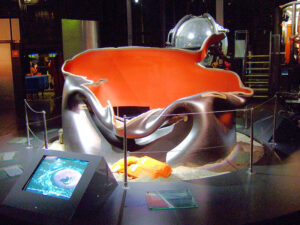 The wave hit, and things began to collapse. Within 15 minutes of the collapse, the floating apartment complex had capsized. It was so fast that many of the workers were unable to make it to the lifeboats. The Royal Air Force of Great Britain and Norwegian military both immediately sent rescue helicopters, but the poor weather made it impossible for them to help. Of the 208 people onboard, 123 drowned. The nightmare scenario seemed impossible, but a subsequent investigation revealed that there was a previously undetected crack in one of main legs of the platform. That had caused the structure’s disastrous collapse. The Alexander Kielland sat in the water for three years before it was salvaged.
The wave hit, and things began to collapse. Within 15 minutes of the collapse, the floating apartment complex had capsized. It was so fast that many of the workers were unable to make it to the lifeboats. The Royal Air Force of Great Britain and Norwegian military both immediately sent rescue helicopters, but the poor weather made it impossible for them to help. Of the 208 people onboard, 123 drowned. The nightmare scenario seemed impossible, but a subsequent investigation revealed that there was a previously undetected crack in one of main legs of the platform. That had caused the structure’s disastrous collapse. The Alexander Kielland sat in the water for three years before it was salvaged.
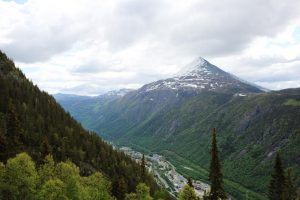 Anyone who finds Winter and the shortened nights depressing, can understand how a person can crave the sun. There is even a condition known as SAD (Seasonal Affective Disorder) that comes out of the limited or even lack of sunlight. People in Alaska and other areas near the pole regions often suffer from it in the dark winter days. The polar regions aren’t the only ones with the problem, however.
Anyone who finds Winter and the shortened nights depressing, can understand how a person can crave the sun. There is even a condition known as SAD (Seasonal Affective Disorder) that comes out of the limited or even lack of sunlight. People in Alaska and other areas near the pole regions often suffer from it in the dark winter days. The polar regions aren’t the only ones with the problem, however.
There is a tiny town in Norway, called Rjukan. For hundreds of years, the inhabitants of this tiny Norwegian town went without direct sunlight for almost half the year. It’s not because this town is situated near the North Pole, because it isn’t. Nevertheless, the place Rjukan is situated is the problem. Rjukan is wedged at the bottom of a steep east-west valley in southern Norway’s Telemark region. It’s surrounded by mountains, including the 6,178-foot-high Gaustatoppen.
Rjukan is a company town, founded for the employees of Norsk Hydro, an aluminum powerhouse that is still going strong today. At first the town built an aerial tramway, Krossobanen, to give employees and their families access to the winter sunshine. Sam Eyde, the founder of the town, began to consider building sun mirrors on the mountain as far back as 1913, but the tramway was built first. It was the first such system in northern Europe, and still functions today. The tramway served a purpose, but really didn’t solve the problem.

Still, the desire for the kind of direct sunlight first shared by Eyde never went away. Then, more than 90 years later, a local resident and artist, Martin Andersen took up the idea from the history books. He began to think that maybe the idea was a good one. So, on October 30, 2013, almost 100 years to the day when the idea was first presented, the Rjukan sun mirror officially opened. For the first time in the town’s history, the sun actually shown on the town in the winter months. The people were elated. At first, not everyone was on board with Andersen’s plans. Many locals criticized the $750,000 project, believing the money could be better spent elsewhere, but when they saw how excited everyone was with the day, it was hard to continue to be negative. The people put on sunglasses, and basked in the sun’s light and warmth. It was like a big party. The sun mirrors continue to be a big hit in the town, oddly in the summer, as well as the winter.
Local residents now enjoy an approximately 6,500 square foot ellipse-shaped beam of sunlight into the town square. Between 80% and 100% of the sun’s light is transferred down into the town. The mirror system has helped the tourism industry. It’s said, “This summer there were several tourists who turned their backs on the real sun, and sat instead with their faces to the sun mirror.” Locals and tourists can even hike to the mirrors. As 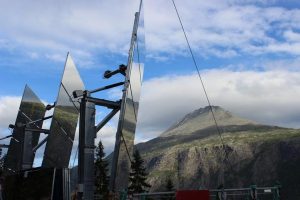 unusual as it may seem, Rjukan’s sun mirror system is not a world first. The small town of Viganella, in Italy’s steep Antrona Valley, celebrated its own day of the light in December 2006, as a sheet of steel was installed to reflect sunlight into the town square from November to February. The system in Rjukan is significantly more advanced, however. Each of the three 182 square foot mirrors are controlled computer-driven motors called heliostats. They track the movement of the sun across the horizon and constantly reposition the mirrors to keep the reflected light as consistent as possible. What a cool idea for a town and its people who can’t get easy access to the sun.
unusual as it may seem, Rjukan’s sun mirror system is not a world first. The small town of Viganella, in Italy’s steep Antrona Valley, celebrated its own day of the light in December 2006, as a sheet of steel was installed to reflect sunlight into the town square from November to February. The system in Rjukan is significantly more advanced, however. Each of the three 182 square foot mirrors are controlled computer-driven motors called heliostats. They track the movement of the sun across the horizon and constantly reposition the mirrors to keep the reflected light as consistent as possible. What a cool idea for a town and its people who can’t get easy access to the sun.
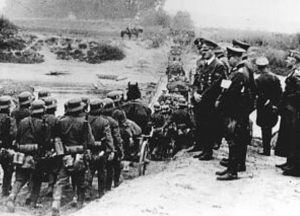 While Germany was not able to bring home the victory in World War II, they were a formidable enemy early in the war. On April 9, 1940, Nazi Germany launched an invasion into Norway. The initial attack was successful, and the Nazis captured several strategic points on the Norwegian coast. Hitler didn’t care that Norway had declared neutrality at the outbreak of World War II. Hitler wanted to rule the world and Norway was part of what he wanted.
While Germany was not able to bring home the victory in World War II, they were a formidable enemy early in the war. On April 9, 1940, Nazi Germany launched an invasion into Norway. The initial attack was successful, and the Nazis captured several strategic points on the Norwegian coast. Hitler didn’t care that Norway had declared neutrality at the outbreak of World War II. Hitler wanted to rule the world and Norway was part of what he wanted.
During the preliminary phase of the invasion, Norwegian fascist forces under Vidkun Quisling acted as a so-called “fifth column” for the German invaders, seizing Norway’s nerve centers, spreading false rumors, and occupying military bases and other locations. They were the invaders from within.  Quisling agreed with Hitler concerning the “Jewish problem” and became the leader of Norway during the Nazi occupation. Prior to that Quisling served as the Norwegian minister of defense from 1931 to 1933, and in 1934 he left the ruling party to establish the Nasjonal Samling, or National Unity Party, which was an imitation of Adolf Hitler’s Nazi Party.
Quisling agreed with Hitler concerning the “Jewish problem” and became the leader of Norway during the Nazi occupation. Prior to that Quisling served as the Norwegian minister of defense from 1931 to 1933, and in 1934 he left the ruling party to establish the Nasjonal Samling, or National Unity Party, which was an imitation of Adolf Hitler’s Nazi Party.
Norway’s declaration of neutrality didn’t do them much good when their own minister of defense was a traitor. Norway’s declared neutrality at the outbreak of World War II, was simply a small stumbling block in the plan Nazi Germany had. Hitler regarded the occupation of Norway a strategic and economic necessity. In the spring of 1940, Vidkun Quisling met with Nazi command in Berlin to plan the German conquest of his country. The Norwegian people have no warning on April 9th, when the combined German forces attacked, and by June 10th Hitler had conquered Norway and driven all Allied forces from the country.
Being the head of the only political party permitted by the Nazis didn’t do Quisling 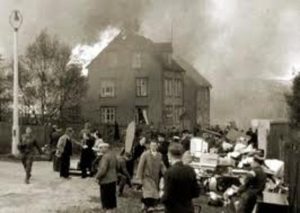 any good either. The people hated him, and opposition to him in Norway was so great that he couldn’t formally establish his puppet government in Oslo until February 1942. Nevertheless, the regime he set up under the authority of his Nazi commissioner, Josef Terboven, was a repressive regime that was merciless toward those who defied it. There was not peace for either side in those years. Norway’s resistance movement soon became the most effective in all Nazi-occupied Europe, and Quisling’s authority rapidly failed. After the German surrender in May 1945, Quisling was arrested, convicted of high treason, and shot. He was so hated that from his name comes the word quisling, meaning “traitor” in several languages.
any good either. The people hated him, and opposition to him in Norway was so great that he couldn’t formally establish his puppet government in Oslo until February 1942. Nevertheless, the regime he set up under the authority of his Nazi commissioner, Josef Terboven, was a repressive regime that was merciless toward those who defied it. There was not peace for either side in those years. Norway’s resistance movement soon became the most effective in all Nazi-occupied Europe, and Quisling’s authority rapidly failed. After the German surrender in May 1945, Quisling was arrested, convicted of high treason, and shot. He was so hated that from his name comes the word quisling, meaning “traitor” in several languages.
 Nine parachutes floated silently to the Earth on a calm February 27, 1943. Their mission was to blow up a Nazi-controlled heavy water plant in Vemork, Norway. The men had been specially trained by British Special Operations, and they had been chosen to carry out this vital mission. Heavy water was a crucial element in the production of plutonium, an ingredient for the nuclear bomb Hitler’s scientists were feverishly attempting to build. The plant at Vemork was the only such facility in the world.
Nine parachutes floated silently to the Earth on a calm February 27, 1943. Their mission was to blow up a Nazi-controlled heavy water plant in Vemork, Norway. The men had been specially trained by British Special Operations, and they had been chosen to carry out this vital mission. Heavy water was a crucial element in the production of plutonium, an ingredient for the nuclear bomb Hitler’s scientists were feverishly attempting to build. The plant at Vemork was the only such facility in the world.
The plant at Vemork was heavily fortified, and it remoteness made it impervious to bombing. It could only be destroyed on site, and for the men, parachuting in was just the beginning of the mission. The men would also be required to scale a 500-foot-high cliff in the dead of winter, and infiltrate a heavily guarded basement laboratory. The nine Norwegians, led by 23 year old Joachim Ronneborg, did just that, successfully detonating 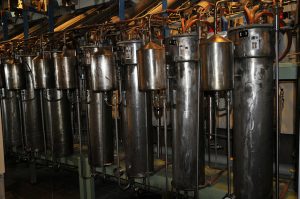 explosives that shut down the facility. The destruction of the Vemork plant was crucial in Albert Speer’s decision to halt attempts to produce a Nazi atomic weapon.
explosives that shut down the facility. The destruction of the Vemork plant was crucial in Albert Speer’s decision to halt attempts to produce a Nazi atomic weapon.
The United States began early nuclear research first, but Germany was moving forward with its own nuclear energy research and atomic bomb program. In April 1939, Germany began a secret program called the Uranverein or “Uranium Club.” The German program recruited some of the top scientific minds in Germany, including recent Nobel Prize winner Werner Heisenberg. It was led by physicist Kurt Diebner. The Uranium Club was getting dangerously close to making an atomic weapon, and it had to be stopped. Hitler could not win this one.
Had nine Norwegian soldiers not trekked into the cold on that day in February 1943, it is hard to say how much 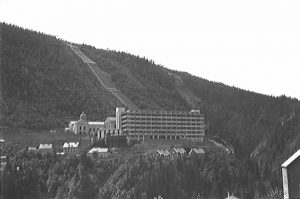 longer the war might have lasted, or how much destruction might have been carried out. Their brave and selfless act saved many lives to be sure. At the very least, Operation Gunnerside should be recognized as one of the most successful SOE missions during World War II. Ronneborg and his squad fully expected this mission to be a one-way trip. It never occurred to them that they might survive. Nevertheless, the operation brought with it zero casualties, and temporarily destroyed the Germans’ single source of heavy water at the time. Ronneborg later commented that “London could have suffered a different fate and ended up ‘looking like Hiroshima’ if his team had failed.”
longer the war might have lasted, or how much destruction might have been carried out. Their brave and selfless act saved many lives to be sure. At the very least, Operation Gunnerside should be recognized as one of the most successful SOE missions during World War II. Ronneborg and his squad fully expected this mission to be a one-way trip. It never occurred to them that they might survive. Nevertheless, the operation brought with it zero casualties, and temporarily destroyed the Germans’ single source of heavy water at the time. Ronneborg later commented that “London could have suffered a different fate and ended up ‘looking like Hiroshima’ if his team had failed.”
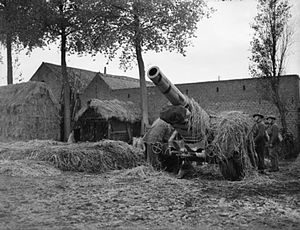 A declaration of war usually means that the people in both areas within the dispute had better prepare for eminent attack, because the declaration of war is like firing the warning shot before the actual open-fire begins. Of course, it may not be an immediate attack, but the attack always comes…or does it. On September 3, 1939, the United Kingdom and France declared war on Nazi Germany, after the Germans invaded Poland. Over the next eight months, at the start of World War II, there were no major military land operations on the Western Front. Strange, considering that the United Kingdom and France had declared war on Nazi Germany. You would think that they would attack or something, but nothing happened. During those eight months, Poland was overrun. It took about five weeks for the German Invasion of Poland beginning September 1, 1939 and the Soviet invasion beginning on 17 September 1939. Still, the Western Allies did nothing. I guess I don’t understand that. War had been declared by each side, but no Western power would
A declaration of war usually means that the people in both areas within the dispute had better prepare for eminent attack, because the declaration of war is like firing the warning shot before the actual open-fire begins. Of course, it may not be an immediate attack, but the attack always comes…or does it. On September 3, 1939, the United Kingdom and France declared war on Nazi Germany, after the Germans invaded Poland. Over the next eight months, at the start of World War II, there were no major military land operations on the Western Front. Strange, considering that the United Kingdom and France had declared war on Nazi Germany. You would think that they would attack or something, but nothing happened. During those eight months, Poland was overrun. It took about five weeks for the German Invasion of Poland beginning September 1, 1939 and the Soviet invasion beginning on 17 September 1939. Still, the Western Allies did nothing. I guess I don’t understand that. War had been declared by each side, but no Western power would 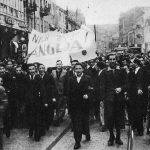 launch a significant land offensive…even though the terms of the Anglo-Polish and Franco-Polish military alliances obligated the United Kingdom and France to assist Poland. They simply stood by and let it happen.
launch a significant land offensive…even though the terms of the Anglo-Polish and Franco-Polish military alliances obligated the United Kingdom and France to assist Poland. They simply stood by and let it happen.
The quiet of the so-named Phoney War was marked by a few Allied actions. During the Saar Offensive in September, France attacked Germany with the intention of assisting Poland, but the attack fizzled out within days and the French withdrew. In November, the Soviets attacked Finland in the Winter War. This resulted in much debate in France and Britain about helping Finland, but this campaign was delayed until the Winter War ended in March. The Allied discussions about a Scandinavian campaign caused concern in Germany and resulted in the German invasion of Denmark and Norway in April. Then the Allied troops that were previously assembled for Finland were redirected to Norway instead. Fighting there continued until June when the Allies evacuated, ceding Norway to Germany in response to the German invasion of France, which had taken place on May 10, 1940.
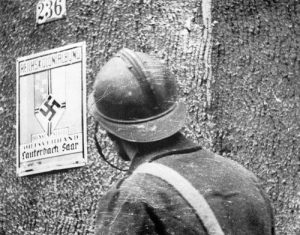
The Germans launched attacks at sea during the autumn and winter of 1939, against British aircraft carriers and destroyers, sinking several including the carrier HMS Courageous with the loss of 519 lives. Action in the air began on October 16, 1939 when the Luftwaffe launched air raids on British warships. There were various minor bombing raids and reconnaissance flights on both sides, but nothing that could possibly be viewed as a clear offensive….and during that whole time, people were dying and being subjected to various atrocities, because no one would help. Yes, war was declared, but it was a phony war, and apparently a phony declaration.

